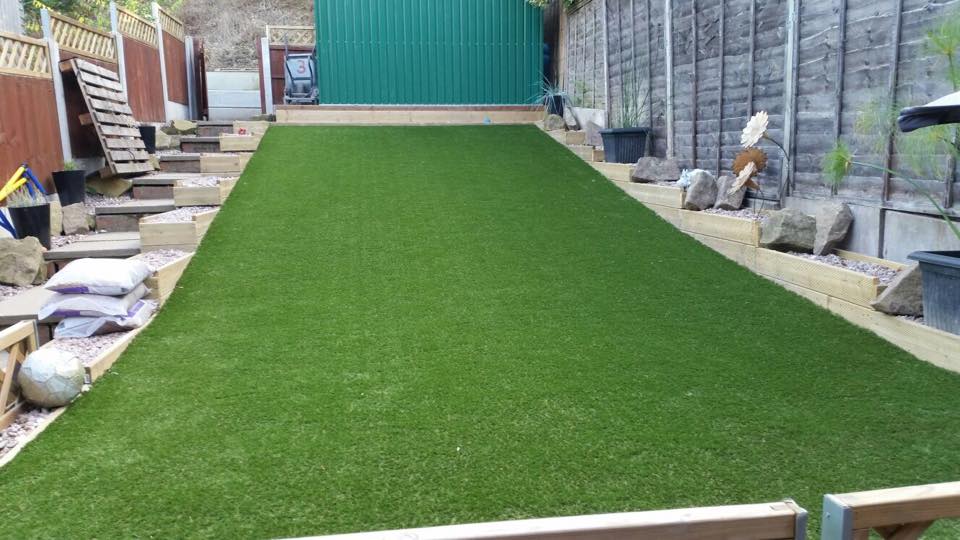How To Install Artificial Grass On Slopes In La Mesa?

- The first step in any artificial grass installation project is thorough preparation, and this is especially crucial when dealing with slopes. Start by removing any existing grass, weeds, or debris from the area. Ensure the soil is level and compacted to create a stable foundation. It’s advisable to use a compactor machine to achieve the required level of soil compaction. Proper grading is vital to prevent water pooling and ensure a smooth surface.
- Weed growth can be a persistent issue, especially on sloped surfaces. To prevent weeds from penetrating your artificial grass, it’s essential to install high-quality weed barrier fabric. This fabric not only inhibits weed growth but also allows for proper drainage. Ensure that the fabric is securely fastened and overlaps are adequately sealed to prevent any potential weed infiltration.
- Choosing the appropriate type of artificial grass is critical for a successful installation on slopes. Opt for a grass variety that is specifically designed for sloped surfaces. These varieties often have shorter blades and a sturdier backing to withstand the challenges of sloped terrain. Additionally, consider the color and texture that best matches your landscape design and preferences.
- Properly securing the artificial grass is crucial to ensure it remains in place, especially on slopes. Use landscape staples or synthetic turf adhesive to anchor the edges and seams of the grass. Be sure to place the staples or adhesive close to the edge to prevent any gaps or lifting. On steeper slopes, you may need to use more staples or adhesive for added security.
- After successfully installing artificial grass on slopes, it’s essential to maintain and care for it regularly. Brushing the grass blades with a stiff broom or brush can help maintain their upright position and prevent matting. Periodically inspect the edges and seams for any signs of lifting or damage, and promptly address any issues to ensure the longevity of your artificial grass.
FAQs
Can I Install Artificial Grass On Extremely Steep Slopes?
While it is possible to install artificial grass on steep slopes, it may require additional steps and professional assistance. Steeper slopes may necessitate the use of retaining walls or other stabilization methods to create a suitable base for the artificial grass.
How Do I Prevent Water Runoff On Sloped Artificial Grass?
Proper grading and the use of high-quality weed barrier fabric can help prevent water runoff on sloped artificial grass. Additionally, you can consider installing a drainage system beneath the grass to ensure efficient water flow and prevent pooling.
Is Artificial Grass Safe For Pets On Slopes?
Yes, artificial grass is safe for pets on slopes. In fact, it can be more pet-friendly than natural grass, as it eliminates mud and reduces the risk of pests. Choose artificial grass with good drainage properties and maintain it regularly to ensure a clean and safe environment for your pets.
Conclusion
In conclusion, installing artificial grass on slopes requires careful planning and execution, but it can transform your uneven terrain into a lush and inviting space. Proper preparation, the right materials, and regular maintenance are key to a successful installation. By following these five tips and addressing any challenges with patience and diligence, you can enjoy a beautiful and durable artificial grass lawn on your sloped property. For more information, contact Artificial Grass La Mesa at (619) 313-5777.

